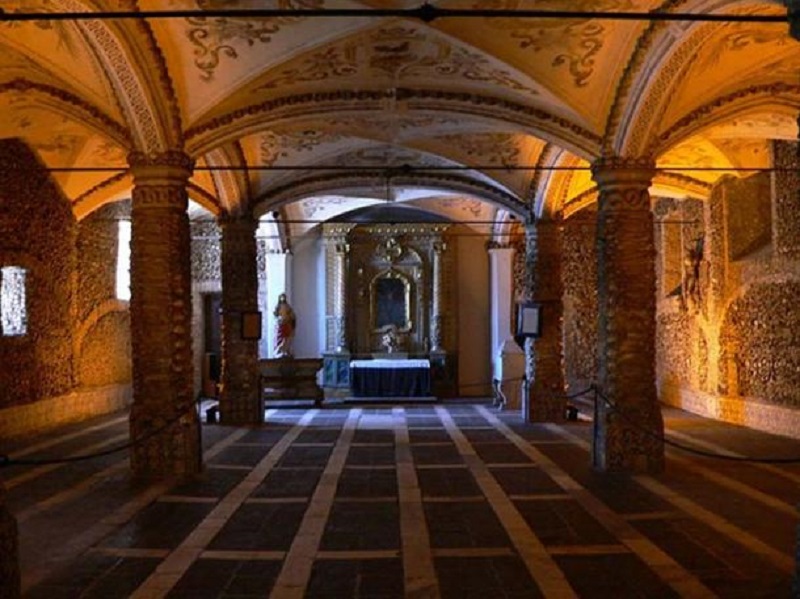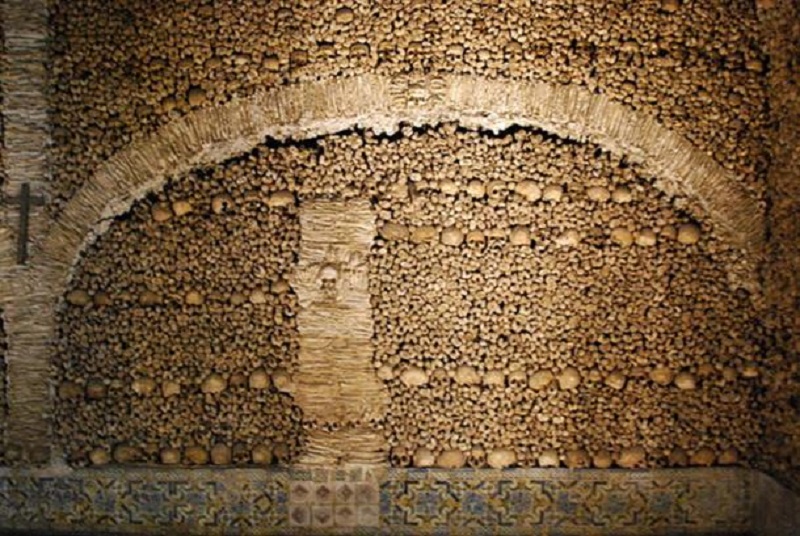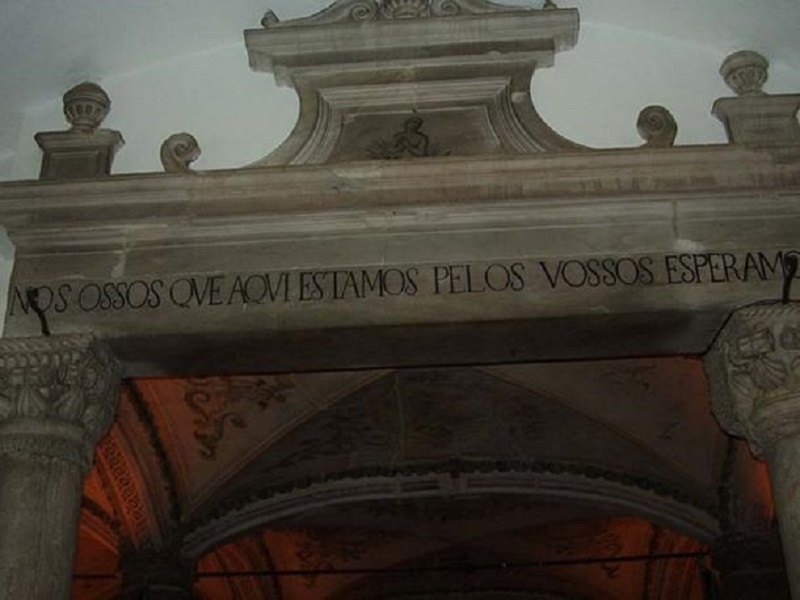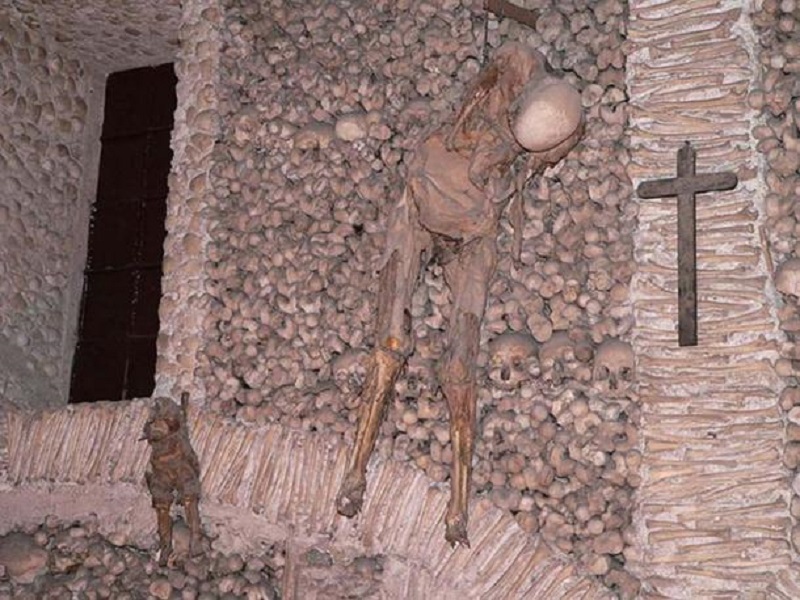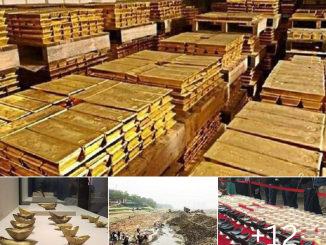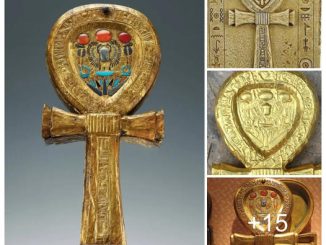When thinking about the interior design of a place of worship, people often include statues of religious icons, paintings of important religious events, perhaps exotic stained glass windows and an altar or shrine dedicated to that deity. An interior decorated with the bones of the dead does not easily come to mind. But some creative designers came up with and created such a sick decoration for a chapel in Portugal.
The creation of a bone chapel
Capela dos Ossos (roughly translated as ‘Chapel of Bones’) is a chapel located in Évora, south-central Portugal. This chapel dates from the 16th century and is part of the Igreja Real de São Francisco (‘Royal Church of St. Francis’). The chapel was founded by the Franciscans, a religious order in the Catholic Church, and its interior walls are decorated with human bones, hence the name. Today, Capela dos Ossos is one of the most famous and loved monuments in Évora.
Interior of Capela dos Ossos, Évora, Portugal (CC BY-SA 2.0)
The history of Capela dos Ossos begins in the 16th century. During that period, there were 42/43 cemeteries in Évora. This means much valuable land is being wasted. Instead of being used for more productive activities, such as agriculture or the construction of buildings, these plots of land were used to bury the dead. At some point, it was decided that some of these cemeteries should be destroyed and reused for more productive purposes. Therefore, the Franciscans who were living at that time decided to collect the bones of the deceased and rebury them somewhere else, so that their souls could be saved from condemnation.
Close-up of skull-shaped ceiling (CC BY-SA 2.0)
In some cultures, secondary bone burial is a common practice. While the Franciscans could have buried the exhumed bones behind closed doors, they decided to do something completely different. During the 16th century, the Counter-Reformation was strong in Catholic Europe, and various religious orders also played a role in it. The Franciscans of Évora, in the spirit of the Counter-Reformation, decided to bury the bones in a chapel where they would be displayed for all to see. The Franciscans hope to stimulate visitors to the chapel to think and reflect on the transience and fragility of human life, as well as the inevitability of death, because they are concerned with the values social decline of city dwellers.
Bones and skulls placed in different patterns by monks (CC BY-SA 3.0)
Behind the bones
It has been pointed out that the design of the Capela dos Ossos was inspired by the San Bernardino alle Ossa church in Milan, Italy, famous for its ossuary. For Capela dos Ossos, an estimated 5000 bodies were exhumed and later used by the Franciscans to decorate the walls of the chapel. According to legend, these skeletons once belonged to soldiers who died in a great battle, or were victims of a plague. However, in reality, these skeletons came from ordinary people buried in Évora’s medieval cemeteries. In any case, the Franciscans arranged the bones in a variety of ways.
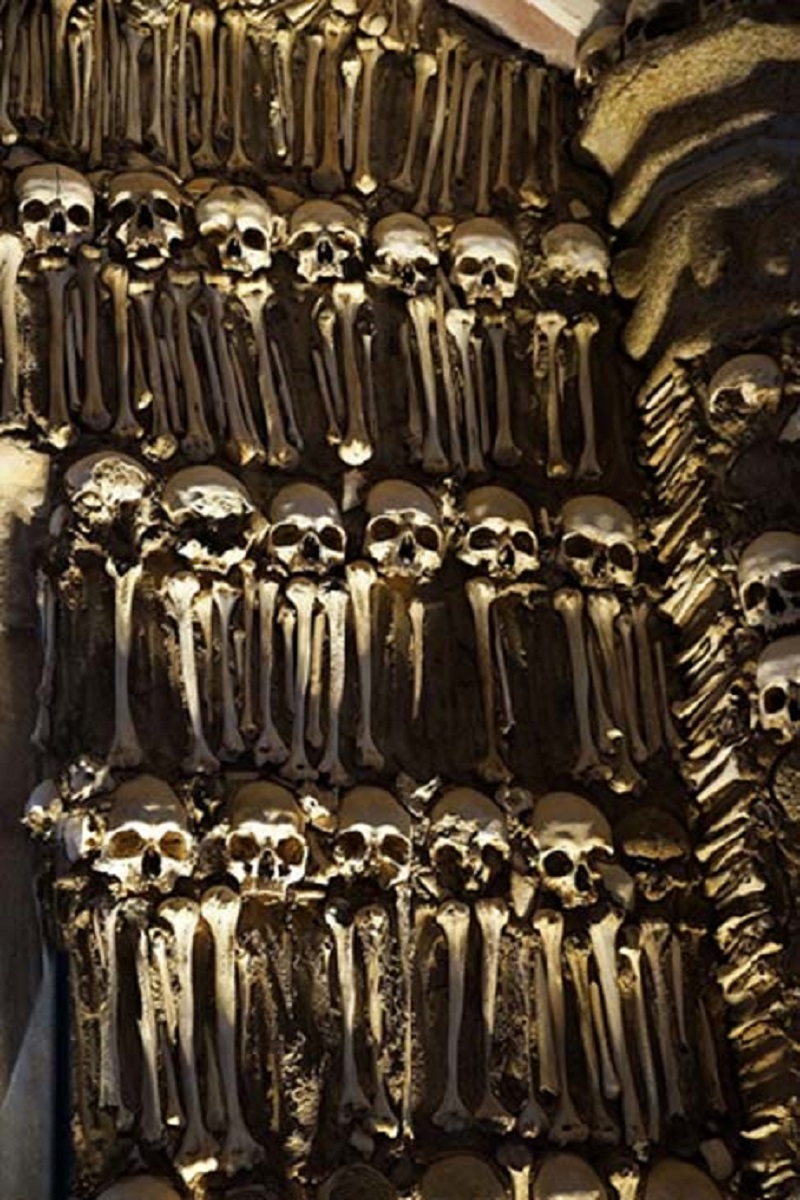
Another skull model (CC BY-SA 2.0)
Other features of the Chapel
In addition to the bones, there are several other features to note in Capela dos Ossos. For example, one of them is the written messages displayed in the chapel. The most famous of these can be found above the chapel door and is visible to all who enter. This message, written in Portuguese, reads “Ós ossos que aqui estamos, pelos vossos esperamos”, and translates as ‘Our bones are here waiting for you’.
The inscription above the door means “We bones, are here, waiting for you.” (Public domain)
Another curiosity at Capela dos Ossos are two withered corpses, one of an adult and one of a child, both hanging from ropes on the wall. There are many different stories surrounding these two individuals. According to one person, the two corpses belonged to a woman and her child. Because they were cursed by a powerful man, they were refused burial in local cemeteries, and eventually had to seek shelter in a chapel. According to another story, the corpse of an adult belonged to an adulterous man, and the child was his infant son, both of whom were cursed by the man’s angry wife.
Decomposed bodies hang in Capela dos Ossos. ( CC BY-SA 2.0 )
Surprisingly, this is not the only bone chapel found in Portugal. Another street south of Faro, similarly decorated but with only the bones of monks, is said to be even more gruesome because it includes a temple of skulls.
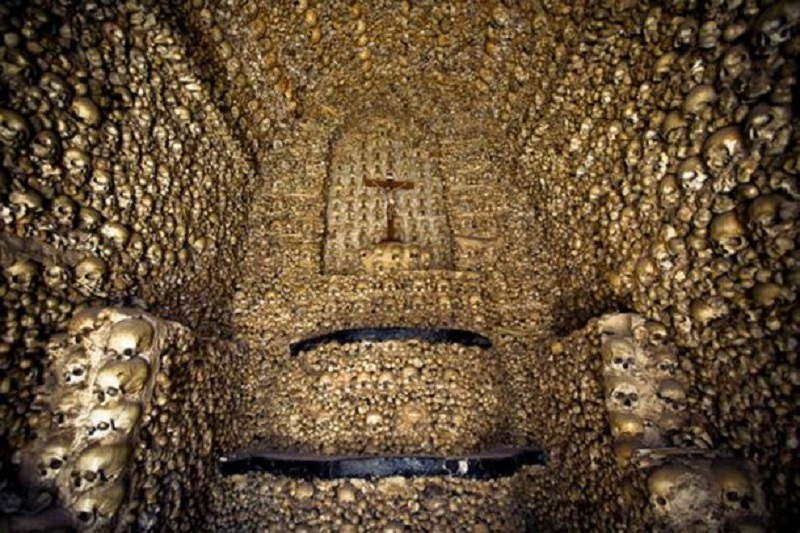
Another Portuguese skull temple at Capela dos Ossos in Faro. ( CC BY-NC-ND 2.0 )
